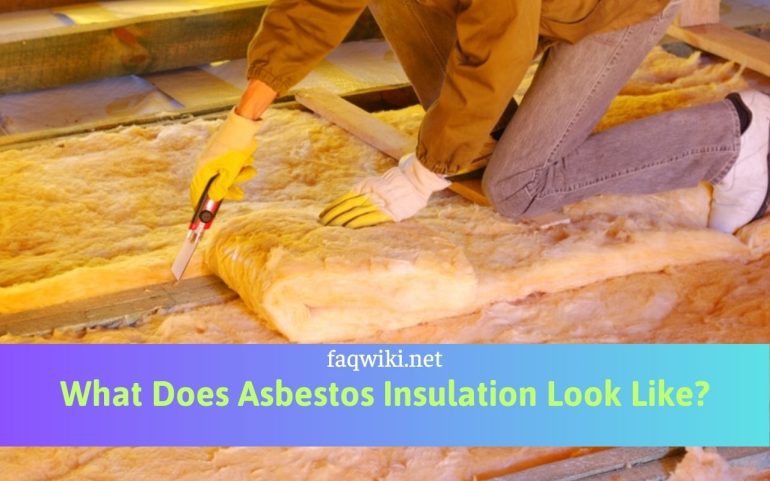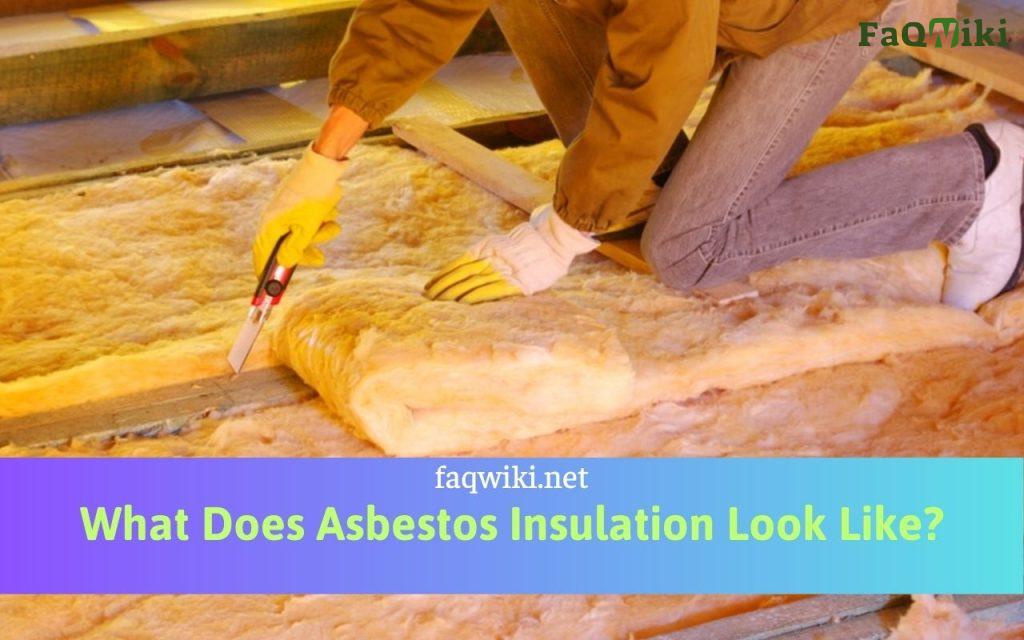What Does Asbestos Insulation Look Like?

Asbestos is a naturally occurring mineral that was commonly used in building insulation due to its heat resistance and durability. However, it has been discovered that asbestos is a carcinogen, which means that it can cause cancer and other serious respiratory illnesses. Asbestos exposure can occur when the fibers are inhaled, and these fibers can remain in the lungs for decades, causing scarring and other health issues. In this article, we will discuss what asbestos insulation looks like, its dangers, and how to identify, test, and safely remove asbestos insulation in your home.

Introduction
Asbestos is a mineral that has been used for thousands of years, dating back to ancient Greece and Rome. It was first used in building materials during the Industrial Revolution due to its fire-resistant and insulating properties. However, it was later discovered that asbestos exposure could cause serious health problems, including cancer and mesothelioma. In many countries, the use of asbestos has been banned, but it can still be found in older homes and buildings.
The purpose of this article is to provide information about what asbestos insulation looks like, its dangers, and how to identify and safely remove it from your home. By understanding the risks associated with asbestos exposure and taking steps to protect yourself and your family, you can ensure a safe and healthy living environment.
What is Asbestos?
Asbestos is a naturally occurring mineral that was commonly used in building materials due to its strength, durability, and heat resistance. It was widely used in insulation, roofing materials, floor tiles, and other building materials until the 1980s when the health risks associated with asbestos exposure became well-known.
There are several different types of asbestos, including chrysotile, amosite, and crocidolite, among others. Chrysotile is the most commonly used type of asbestos and accounts for more than 90% of asbestos used in building materials. It is a white, curly fiber that is often referred to as “white asbestos.” Amosite and crocidolite are less commonly used types of asbestos, but they are considered more dangerous because their fibers are much finer and can penetrate the lungs more easily.
History of Asbestos Insulation
Asbestos insulation was first used in the early 1900s as a fire-resistant insulation material. It was commonly used in pipes, boilers, and other heating systems, as well as in walls and ceilings. Asbestos was also used as a decorative material, such as in textured ceilings known as “popcorn ceilings.” The use of asbestos insulation peaked in the 1970s, and it was later discovered that the inhalation of asbestos fibers could cause serious health problems.
Health Effects of Asbestos Exposure
Uncontrolled exposure to asbestos can prove hazardous to your health, inducing the onset of dangerous respiratory illnesses such as lung cancer, mesothelioma and asbestosis. These diseases can take years or even decades to develop, and they are often difficult to diagnose. Asbestos exposure can also cause other respiratory problems, such as coughing, chest pain, and difficulty breathing.
Asbestos exposure often leads to the grave health issue of lung cancer, which is one of the most common illnesses caused by it. It is estimated that up to 10% of all lung cancer cases are related to asbestos exposure. Mesothelioma is an uncommon and aggressive cancer that assaults the linings of your lungs, heart, or abdomen. Asbestosis is a chronic lung disease that can cause scarring of the lung tissue, leading to difficulty breathing.
Identifying Asbestos Insulation
Asbestos insulation can be found in a variety of places in the home, including walls, ceilings, pipes, and heating systems. It can be difficult to identify asbestos insulation because it often looks like other
Asbestos insulation is typically gray or white in color and has a fibrous texture. It may look like a fluffy or wool-like material, and the fibers may be loosely packed or tightly compacted. Asbestos insulation may also be wrapped in a fabric-like material or have a coating of a hard, plaster-like material.
If you suspect that you have asbestos insulation in your home, For optimum safety and success, make sure to have your product professionally tested.
Asbestos fibers are microscopic and cannot be identified by sight alone. A professional can take a sample of the material and analyze it under a microscope to determine if it contains asbestos.
Testing for Asbestos
Testing for asbestos is essential if you suspect that you have asbestos insulation in your home. Asbestos testing should always be performed by a qualified professional, as exposure to asbestos fibers during testing can be dangerous. There are several different methods that can be used to test for asbestos. The most common method is bulk sampling, where a small piece of the material is taken and analyzed under a microscope. Air sampling can also be used to detect the presence of airborne asbestos fibers. In some cases, both bulk and air sampling may be necessary to determine if asbestos is present.
Safe Removal of Asbestos Insulation
If asbestos insulation is found in your home, it should be removed by a professional abatement contractor. Asbestos removal should never be attempted by an untrained individual, as the fibers can become airborne and cause serious health problems.
The removal process typically involves sealing off the affected area, using specialized equipment to remove the insulation, and disposing of it properly. The area must be thoroughly cleaned and tested after the removal process to ensure that all asbestos fibers have been removed.
Conclusion
Asbestos insulation is a dangerous material that can cause serious health problems. If you suspect that you have asbestos insulation in your home, it is important to have it tested by a professional and removed safely. By understanding the risks associated with asbestos exposure and taking steps to protect yourself and your family, you can ensure a safe and healthy living environment.
FAQs
Is asbestos still used in building materials today?
No, the use of asbestos has been banned in many countries, including the United States.
How can I tell if I have asbestos insulation in my home?
Asbestos insulation can be difficult to identify by sight alone. Expert testing of this is essential.
What should I do if I suspect that I have asbestos insulation in my home?
Contact a professional asbestos abatement contractor to have the material tested and removed safely.
Can I remove asbestos insulation myself?
No, asbestos removal should only be performed by a trained and certified professional.
What are the health risks associated with asbestos exposure?
Asbestos exposure can cause a variety of serious health problems, including lung cancer, mesothelioma, and asbestosis. Over a span of years or even decades, these illnesses can gradually manifest.
